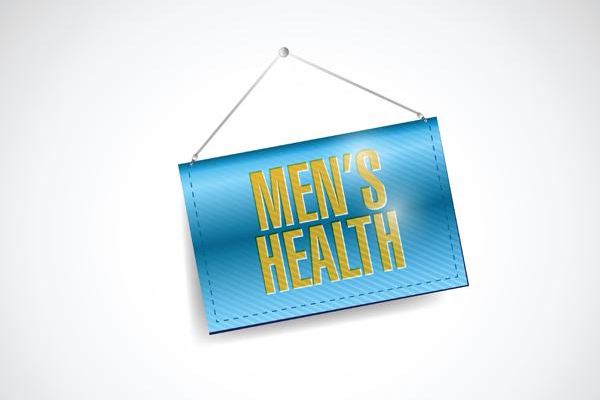If you aren't in the know about common health concerns for men, read on. Some health conditions, such as an enlarged prostate, prostate and testicular cancers and low testosterone levels, which can lead to sexual or mood problems, are specific to men and may need your attention.
Prostate Health
The prostate is a walnut-sized gland just below the bladder that's part of the male reproductive system. This gland produces the fluid that becomes part of semen, the white fluid that contains sperm. Many men experience prostate problems as they get older.
The following chart provides a quick look at the three main problems that occur in the prostate.
| Condition | What it is? | Symptoms? | Possible ways to diagnose problem |
| Prostatitis | Inflammation or infection of the prostate gland; most common in men under 50 |
|
|
| Benign prostatic hyperplasia (BPH) | A noncancerous enlargement of the prostate that places pressure on the urethra and can cause urination problems; more common in men over 50. By age 70, almost all men have some prostate enlargement. |
|
|
| Prostate cancer | Less common than BPH; primarily affects men over the age of 65. |
Prostate cancer symptoms are similar to those for prostatitis and BPH and can also include:
Symptoms often don't occur for years after cancer has developed. |
|
As always, talk with your health care provider about your symptoms and what screenings he or she recommends. Increasing age, being an African-American male and having a family history of prostate cancer place you at greatest risk.
There is ongoing debate surrounding the use of the PSA blood test. While this test can detect the disease in its early stages, it's not yet been proven that early detection actually saves lives, despite the drop in prostate cancer deaths since such screenings began to be used 15 years ago. Because neither the PSA test nor the DRE is 100 percent accurate, it's important to openly discuss the benefits and risks of testing at annual checkups to make an informed decision. The American Cancer Society, along with several other medical organizations, recommends that health care professionals offer these screening tests to all men beginning at age 50.
Testicular Cancer
The testes (or gonads) are male sex glands that produce and store sperm and are the main source of the male hormone, testosterone. Testicular cancer is not common; a man’s lifetime risk of developing the disease is about one in 300. But although it's rare, the rate of testicular cancer has more than doubled in the last 40 years, and while the reason isn't known, it's important to be watchful. Your doctor should examine your testicles as part of your routine exams. He or she may recommend that you perform self-exams of your testicles to check for swelling, tenderness or lumps by rolling each testicle gently between your thumbs and fingers.
In most cases, there will be a painless lump or swelling of the testicle. Other signs and symptoms include:
- Pain or discomfort in a testicle or in the scrotum (sac-like pouch that hold the testes)
- Any enlargement of a testicle or change in the way it feels
- Heaviness or aching in, belly, back or groin
- Collection of fluid in the scrotum
Testicular cancer can occur on one or both testicles and is most common in young, white men, typically between the ages of 20 and 39. The good news is that it's one of the most treatable and curable forms of cancer.
Major risk factors include:
- An undescended testicle (called cryptorchidism)––this occurs when the testicle (or testicles) does not move down into the scrotum and is often corrected through surgery
- Being a young, white male
- Previous testicular cancer
- Family history
In addition to an examination of the testicles, your health care provider may recommend blood tests; an ultrasound, which uses sound waves to make images of your internal organs; and biopsy to collect a sample of cells or tissue
Low Testosterone
Testosterone, the main male hormone, is responsible for traditional male traits, including body and facial hair, sperm production, muscle mass and strength and a deep voice. Normal levels of testosterone also promote sexual function and sex drive.
As men age, the level of testosterone in the body drops. There are also other medical conditions that can interfere with testosterone levels, including problems with the pituitary gland or hypothalamus.
An estimated five million American men may suffer from low testosterone, but only a small percentage are currently treated. Low levels of testosterone can result in:
- Low sex drive
- Erectile dysfunction (ED)
- Increased irritability or depression
- Decreased energy
- Reduced muscle mass and strength
- Inability to concentrate
- Decreased bone density; osteoporosis
If you notice any of these symptoms, talk with your doctor. He or she may want to check your testosterone levels. There are several ways to replace testosterone through injections, patches or gels that are rubbed into the skin. However, you'll need to work with your health care provider to discuss the pros and cons of therapy. Increasing testosterone levels can lead to enlargement of the prostate, low sperm production and other problems.
Terms to Know
PSA––Prostate Specific Antigen
A blood test that can often detect a prostate problem. An abnormal test may mean additional testing is needed.
DRE––Digital Rectal Exam
A test in which the doctor puts a gloved finger in the rectum to feel the prostate.







